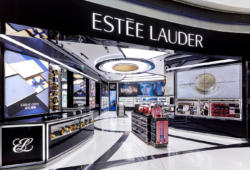Walmart removes Hispanic signag:Social media users have pointed out that Walmart stores have removed Hispanic signage and products.
– At least 60% of consumers appreciate brands that share their values, according to MConV.
– A negative impression of a brand can significantly impact consumer perception.
Social media users were surprised after videos surfaced showing what they consider an act of discrimination. These videos, taken in various Walmart stores in the U.S., reveal changes that many find “uncomfortable,” as signage and Hispanic products have been removed.
According to MConV, about 22% of consumers choose their favorite brands based on shared values.
A series of videos circulating on social media show “before and after” images of Walmart stores, highlighting the removal of signage for “Hispanic Food” and “Mexican Food.” These changes have sparked a wave of online comments.
Initial reports suggest that these removals were implemented as part of anti-immigrant measures, particularly after Donald Trump took a firm stance against illegal migration in the U.S., making the move unexpected for many.
While some customers have expressed dissatisfaction with the removal of Hispanic products, others claim that only the signage was taken down, and most products remain available.
Since Donald Trump took office, his immigration policies have been labeled as “inhumane” by those affected. Now, brands seem to be adopting measures perceived as targeting migrants.
Walmart removes Hispanic signage:Brand Stances and Consumer Reactions
Today, brands not only sell products but also ideas and values that seek to connect with their audience. According to MConV, at least 58% of consumers are aware of a brand’s actions.
However, when a company takes a stance or promotes messages that do not align with its consumers, the impact can be negative—ranging from online criticism to boycotts and loss of customer loyalty.
The challenge for brands is to strike a balance between staying true to their principles while maintaining their customer base. If successful, at least 60% of consumers view brands with strong values positively, according to MConV.
Brands that handle these issues with authenticity and transparency can strengthen their position, while those that force a narrative without genuine commitment risk being seen as opportunistic.
A recent example is Bud Light, which faced significant backlash after collaborating with a transgender influencer.
While some applauded the initiative as a step toward inclusion, others called for a boycott, leading to a drop in sales and forcing the brand to rethink its communication strategy.
This case highlights the importance of understanding the audience and managing social issues with sensitivity.










